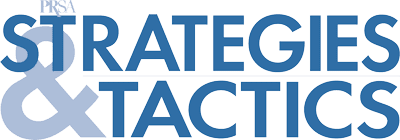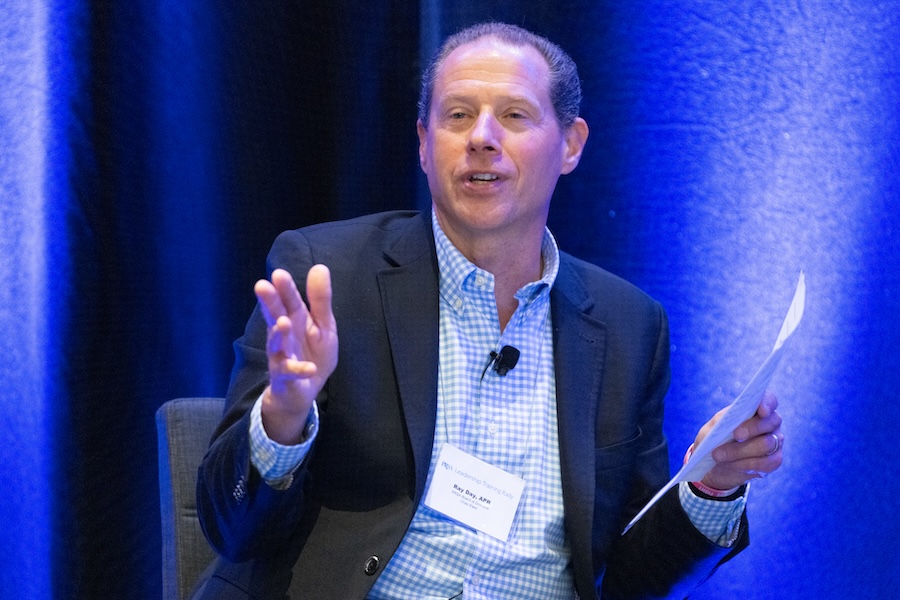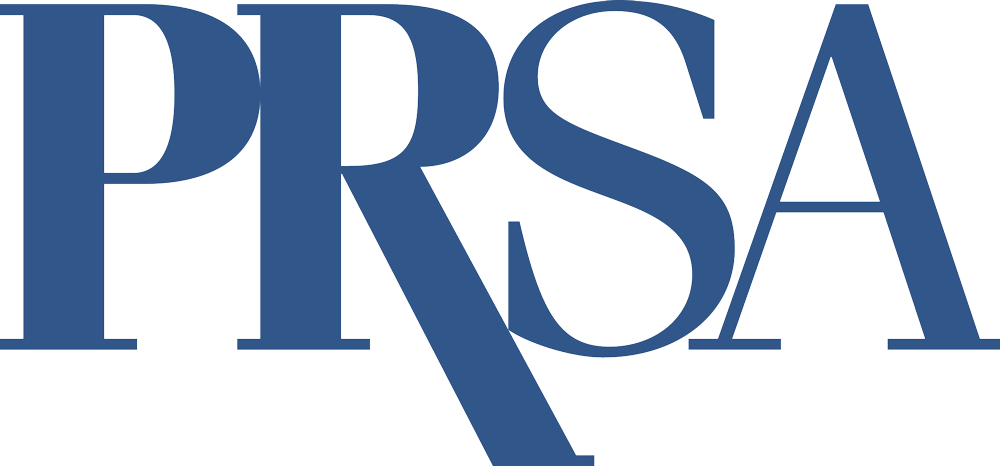Ray Day, APR, on the Year Ahead as PRSA’s Chair
By John Elsasser
January 2025
Ray Day, APR, is PRSA’s 2025 chair. He is also the vice chair of Stagwell and oversees the integration, innovation and growth of its more than 70 global agencies. He also was recently appointed executive chair of Allison Worldwide, Stagwell’s largest comms/PR agency.
Day has more than 30 years of experience as a chief communications officer for leading communications teams, brands and agencies, including IBM and the Ford Motor Company. He joined Stagwell in 2020.
Here, he talks with Strategies & Tactics about the year ahead and why PRSA is “the premier organization serving this profession.”
What prompted you to join PRSA later in your career when you were an executive-level communicator?
I’ve been in this business for 35 years and a member of PRSA for a bit more than six years. I am a relative newbie to PRSA — and someone who’s fallen in love with the organization.
I spent 28 years at the Ford Motor Company, 10 of which were as chief communication officer. I left Ford and joined IBM, where I also was CCO. I spent two and a half years there. On my second day on the job, Brandi Boatner appeared in my cube. For those in PRSA who know Brandi Boatner, she is a force. [Boatner is currently manager, digital & advocacy communications at IBM.]
She was leading our digital communications. She said, “I’ve looked at your résumé, and you have never been part of PRSA.”
Brandi, being Brandi, made it clear that she was not going to leave my cube until I committed to becoming a member of PRSA. She said, “I don’t want you just to become a member; I want you to get involved because we need you.”
I knew about PRSA, but it was the first time in three decades in this industry that anyone had invited me in. People love to be invited in. Opening that door and telling people about this great organization and how they can become part of it are major opportunities for PRSA’s growth.
Do you plan to share your experience with other executive-level communicators who have not yet joined PRSA?
When I first decided to run for the Board of Directors, I said, “If this organization is to be the premier organization serving our profession, we need to appeal to people across the spectrum, from students to agency CEOs. We need to invite everyone in.”
We also need to welcome people who might be videographers or photographers, in new media, or in marcom. We are a professional organization that offers something for everyone.
I’ve never seen an organization so passionate and the people so dedicated to networking, helping each other, and helping each other win.
How do you describe your leadership style?
I love to be viewed as a servant leader. I’ve always been most rewarded and motivated by people who view it as their mission in life to bring out the best in you. I’ve adopted that leadership style.
I believe that a leader’s job has two responsibilities: One is to deal decisively with today’s reality. The other is to paint a picture of what tomorrow looks like and where you are leading this organization, this group of people, and this team.
That’s what servant leadership is. It’s helping people run the business and deal with today but see a tomorrow that they might not have envisioned.
Here, Day, former group vice president of communications at Ford, discusses what he learned working closing with iconic CEO Alan Mulally, and how those experiences shaped his own leadership.
You’ve mentioned asking, “Why?” when evaluating processes. Can you explain your thinking as a leader?
When students ask me: “What are the traits that someone going into comms or PR or journalism needs to have?” I say, “You need to be curious. You need to be always asking, ‘Why?’ and ‘Why not?’ and ‘What could be?’”
My first job — and my first love — was as a reporter. I learned early about asking why, probing and going deep.
I drive my fellow Board members crazy sometimes because I’m the leader who always raises my hand, asking, “Why? Why do we do this? I know we did it 10 years ago, but does it still make sense today and five years on? Is it still relevant?”
Letting go of some of the “we’ve always done it that way” will help make us even more relevant and of even greater value to our members.
What do you think is the biggest opportunity and challenge for PRSA in the year ahead?
It’s an incredible honor to be the PRSA chair, and not one I take lightly. People say, “Well, what are your priorities? What’s your platform?” They haven’t changed since I ran, and I started articulating them more than two years ago. I call them “the three M’s.”
First, it’s about our members. I am passionate about getting closer to our members, offering more value to our members and addressing some of our members’ pain points. That may mean having to re-envision things, to do something different from the way we’ve always done it. If our programming needs to have a wider aperture, if we need to offer more at the senior level, the junior level, the mid-level or more specialized programming, then let’s dig into that.
It’s the reason that I’ve instituted Member Mondays. On the second Monday of every month, we’re going to have a virtual open forum for all members. We’re going to focus on a topic every month that is germane to our industry, that all of our members, or most of our members, are dealing with.
On the fourth Monday of every month, we’ll have a session for Chapter leaders, District leaders, Section leaders, immediate past chairs and presidents, and people in PRSSA. We’re going to focus on leadership and on sharing best practices.
My second M is about membership. It’s about becoming a growth organization. We’ve survived through COVID. Now it’s time to thrive, to grow again. It’s time to do something about our struggle to convert PRSSA members to PRSA members.
At Ford, in particular, we knew how to play defense better than anyone when the company got into trouble or there was a crisis or issue that needed to be dealt with. What we weren’t good at was playing offense, going out proactively to tell our story. We rewrote that playbook during the Great Recession, and I still use it today.
It all comes down to — and this is true for PRSA — “What’s our vision? What’s our plan?” And then the relentless execution of that plan and bringing everyone along. That’s how we will move from survival mode to thriving and growing again.
My third M is move. I have a passionate belief that those of us who operate in this profession, including PRSA, need to move at the speed of news. We need to be immediate in how we respond to each other, and how we respond to issues from an advocate standpoint to increase our speed.
What are your thoughts on strengthening the PRSSA-to-PRSA transition?
Invite people in. Help bring people along. We have too much variability in our Chapters [in how we invite] PRSSA members to come along. Some Chapters do a brilliant job of owning, championing and getting close to their PRSSA Chapters.
And then I hear from students in some parts of the country who say, “I don’t even know the Chapter leaders. I’ve never been invited to their events, and I would love to be invited.”
Some students believe they should wait until they land their first job in PR before joining PRSA. When talking to students on campus or mentoring them, I tell them, “Become a member. Get involved with PRSA to get that first break, that first job, or that second job.”
That’s a communications opportunity for us to help students understand the value that we can provide to them when they’re in the job market.
What are you looking forward to most as chair?
I’m going to be a broken record about the strategic plan. Every Member Monday, we’ll start with a summary of the plan, including where we’re trying to go, our vision, and the key components. We’ll also always focus on that plan at our Board meetings.
So having that vision in front of us and then making progress on the 2025 objectives we’ve set in that strategic plan is what success will look like at the end of the year.
For me, there are four imperatives for PRSA. The first is to build our reputation and relevance. We still have low awareness among the C-suites of the value of PRSA and an APR. We’re a 75-plus-year organization, but we need to be future-focused. What’s the future value, not resting on what we’ve done for the past 75 years?
Number two is to become a much more visible force in this industry. When there is an issue in society, in business, in the political sphere, we need to give our members advice. We need to be the North Star. If we’re going to be the premier organization, then we need to be out there with a voice quickly when the need arises.
That doesn’t mean we need to have a point of view and speak out on every little thing that happens, but where it matters and where it promises to change our profession or the organizations and the businesses we serve, we need to be stronger advocates.
Number three is improving our capability, expertise, and effectiveness. Let’s examine how we organize and operate our Chapters.
Finally, we want to grow our membership. A growing organization is a thriving organization, and a healthy organization is what we want to be — the premier organization serving this profession.



